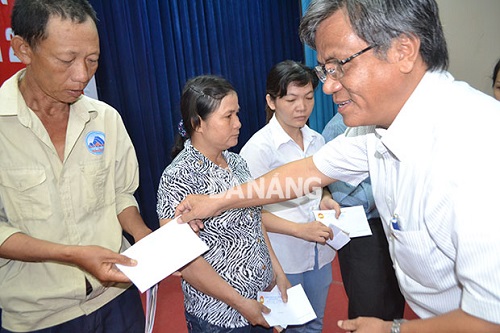Fund for the Poor proves effective
By the end of 2015, Da Nang had already fulfilled the city’s poverty elimination targets for the 2013 - 2017 period as set by the government, 2 years ahead of schedule.
This positive result was mainly attributed to the effective use of the city’s Fund for the Poor which received donations from generous individuals, organisations, businesses, and religious organisations across the city.
During the nationwide Peak Month for the Poor between 17 October and 18 November 2015, the Party organisations of the city’s government agencies donated 1.353 billion VND, whilst local businesses contributed more than 256.5 million VND. In addition, a total of 10.4 billion VND was raised from People's Committees in the districts of Hai Chau, Thanh Khe and Son Tra.
 |
| Poor local residents receiving financial aid from the fund |
Between January and November last year, a total of over 22.69 billion VND was raised for the city's Fund for the Poor, up by 2 billion VND compared with the same period in 2014.
The money went to help 140 local poor families build new houses, and to repair a total of 619 downgraded houses for needy households, social policy beneficiaries, and ethnic minorities. In addition, 3,845 other families were provided with a means of making a living, whilst scholarships were given to 3,451 poor school pupils. As a result, a total of 6,946 poor households have been lifted above the city's newly-defined poverty line.
Ms Ngo Thi Loi from Lien Chieu District’s Hoa Khanh Bac Ward is typical of those receiving financial aid from the Fund for the Poor. Five million VND went to help her raise a cow to help her earn a living, and now she has 3 cows worth over 22 million VND in total. Meanwhile, Ms Pham Thi Xoai from the same district was given 2 million VND from the Fund to help her repair her downgraded house.
The city’s Fund for the Poor has helped to improve the living conditions of poor local residents and lifted many poor households out of poverty in a sustainable manner.